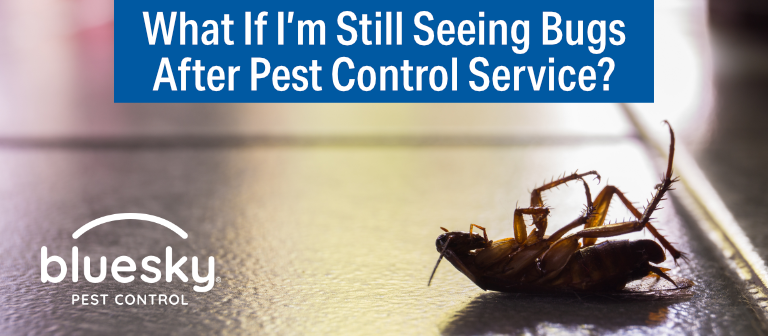Facts About Eco Bed Bug Exterminators Dc Revealed
Facts About Eco Bed Bug Exterminators Dc Revealed
Blog Article
What Does Eco Bed Bug Exterminators Dc Do?
Table of ContentsAn Unbiased View of Eco Bed Bug Exterminators DcEco Bed Bug Exterminators Dc Fundamentals ExplainedEco Bed Bug Exterminators Dc Things To Know Before You Get ThisWhat Does Eco Bed Bug Exterminators Dc Do?Rumored Buzz on Eco Bed Bug Exterminators Dc
Because chemicals are hazardous, they are likewise potentially hazardous to human beings, pets, various other microorganisms, and the atmosphere. People that make use of chemicals or frequently come in call with them should recognize the relative poisoning, prospective health results, and preventative procedures to decrease exposure to the products they utilize. Risk, or risk, of using chemicals is the capacity for injury, or the degree of risk associated with making use of a pesticide under an offered collection of conditions.
However, applicators can minimize or almost eliminate direct exposure-- and hence lower threat-- by complying with the label instructions, making use of individual safety clothes and devices (PPE), and managing the pesticide properly. Even more than 95 percent of all chemical exposures come from dermal direct exposure, mainly to the hands and forearms. By wearing a pair of unlined, chemical-resistant handwear covers, this type of direct exposure can be almost removed.
The unsafe impacts that take place from a single direct exposure by any type of route of entrance are labelled "acute impacts." The 4 routes of direct exposure are facial (skin), inhalation (lungs), oral (mouth), and the eyes. Intense poisoning is figured out by taking a look at the dermal toxicity, breathing toxicity, and oral toxicity of examination animals.
Fascination About Eco Bed Bug Exterminators Dc
Acute toxicity is gauged as the amount or concentration of a toxicant-- the a.i.-- needed to eliminate half of the pets in a test populace. This action is typically shared as the LD50 (lethal dose 50) or the LC50 (deadly focus 50). Furthermore, the LD50 and LC50 worths are based upon a solitary dosage and are taped in milligrams of chemical per kg of body weight (mg/kg) of the guinea pig or in parts per million (ppm).
The lower the LD50 or LC50 worth of a chemical product, the higher its toxicity to people and animals. Chemicals with a high LD50 are the least harmful to people if utilized according to the instructions on the product label. The persistent poisoning of a pesticide is figured out by subjecting test animals to lasting exposure to the active component.
The chronic toxicity of a chemical is harder than acute toxicity to figure out via lab analysis. Products are categorized on the basis of their relative intense toxicity (their LD50 or LC50 worths). Pesticides that are classified as very hazardous (Toxicity Category I) on the basis of either dental, facial, or inhalation toxicity need to have the signal words risk and poisonous substance printed in red with a skull and crossbones icon prominently presented on the front panel of the plan label.
The acute (solitary dose) oral LD50 for chemical items in this group varies from a trace quantity to 50 mg/kg. As an example, direct exposure of a few decreases of a product taken orally can be fatal to a 150-pound person. Some chemical products have simply the signal word risk, which tells you absolutely nothing concerning the severe poisoning, just that the product can create serious eye damage or extreme skin inflammation
Some Known Facts About Eco Bed Bug Exterminators Dc.
In this category, the severe dental LD50 ranges from 50 to 500 mg/kg. A teaspoon to an ounce of this product could be fatal to published here a 150-pound individual (bed bug heater rentals). Pesticide items identified as either somewhat hazardous or reasonably nontoxic (Toxicity Categories III and IV) are needed to have the signal word care on the chemical label

All pesticide poisoning worths, consisting of the LD50, can be discovered on the product's Product Safety and security Data Sheet (MSDS) - how to get rid of bed bugs. Pesticide labels and MSDS can be obtained from retailers or manufactures. On top of that, most items additionally have details that can be located on the web. The signs of pesticide poisoning can range from a light skin irritability to coma or perhaps death.
Since of potential health and wellness issues, chemical individuals and trainers need to recognize the typical signs and signs of pesticide poisoning. The results, or signs and symptoms, of pesticide poisoning can be generally defined as either topical or systemic.
Not known Facts About Eco Bed Bug Exterminators Dc
Dermatitis, or swelling of the skin, is accepted as the most typically reported topical impact associated with pesticide exposure. Some people often tend to cough, hiss, or sneeze when revealed to chemical sprays.
This signs and symptom normally subsides within a few minutes after an individual is gotten rid of from the exposure to the toxic irritant. Nonetheless, a reaction to a chemical product that creates a person not only to sneeze and cough but also to create extreme acute respiratory system signs and symptoms is a lot more likely to be a real hypersensitivity or allergy.
Systemic effects are fairly different from topical results. They frequently take place away from the original factor of get in touch with as an outcome of the pesticide being taken in right into and dispersed throughout the body. Systemic effects typically include nausea or vomiting, vomiting, exhaustion, headache, and intestinal conditions. In advanced poisoning situations, the individual may experience changes in heart rate, problem breathing, convulsions, and coma, which could cause fatality.
Report this page